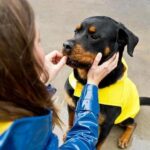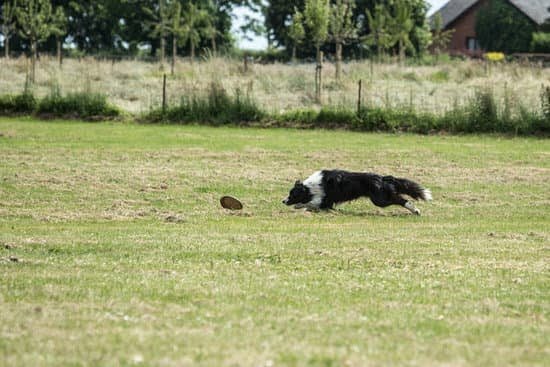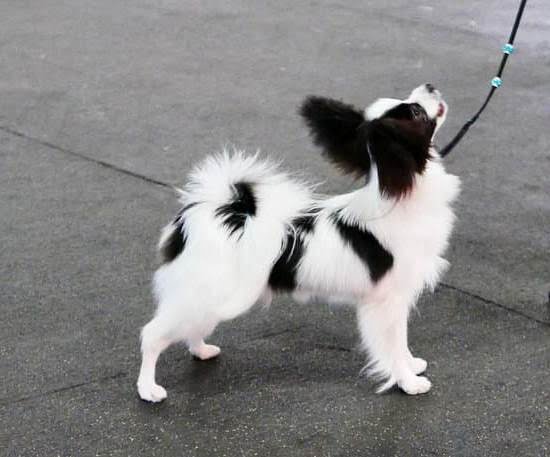Are you wondering, “How to train your dog not to growl at me?” Understanding why dogs growl is the first step in addressing this behavior. Dogs may growl as a form of communication, whether it’s to express fear, pain, discomfort, or to establish boundaries. In some cases, growling can also be a sign of aggression.
Recognizing the triggers for growling is essential in effectively training your dog. It could be specific situations, people, or even certain objects that provoke the growling behavior. By identifying these triggers, you can better address them and prevent your dog from feeling the need to growl.
Utilizing positive reinforcement training methods is a key aspect of addressing growling behavior in dogs. By rewarding desired behaviors and ignoring or redirecting unwanted ones, you can effectively communicate to your dog what is acceptable and what is not. Additionally, establishing clear boundaries and rules within your household can help reduce instances of growling from your dog.
Recognizing the Triggers for Growling
Body Language and Environmental Factors
Understanding the triggers for growling in dogs is an essential step in training them not to exhibit this behavior. Dogs may growl due to a variety of reasons, including fear, discomfort, pain, or feeling threatened. It is crucial for dog owners to observe their pet’s body language and the environmental factors present when their dog starts to growl. Pay attention to their ears, eyes, tail, and overall posture to determine what may be causing the growling behavior.
Identifying Specific Situations
In addition to understanding general triggers for growling, it is important to identify specific situations or stimuli that consistently elicit this response from your dog. Whether it’s when someone approaches while they are eating or when they are touched in a certain way, recognizing these specific triggers can help you address and modify your dog’s behavior more effectively.
Obtaining Professional Guidance
If you find it challenging to identify the triggers for your dog’s growling or if the behavior seems unpredictable, seeking professional help from a certified dog trainer or animal behaviorist is highly recommended. They can conduct an assessment of your dog’s behavior and provide guidance on how to train your dog not to growl at you. Professional trainers can also offer valuable insights into positive reinforcement techniques and desensitization methods tailored to your specific situation.
By recognizing the triggers for your dog’s growling behavior and obtaining professional guidance as needed, you can take proactive steps towards effectively training your dog not to growl at you.
Utilizing Positive Reinforcement Training Methods
Positive reinforcement training methods are an effective way to train your dog not to growl at you. These methods focus on rewarding good behavior rather than punishing bad behavior, which can help build a strong bond between you and your furry friend. When using positive reinforcement, you can use treats, toys, or praise to reward your dog when they exhibit the desired behavior, such as not growling.
One of the key aspects of utilizing positive reinforcement is consistency. It’s important to reward your dog every time they display the behavior you want to encourage, in this case, not growling. This will help them understand what is expected of them and reinforce that behavior over time. For example, if your dog usually growls when you touch their food bowl, you can start by approaching their food bowl without touching it and rewarding them for remaining calm.
Another aspect of utilizing positive reinforcement training methods is identifying what motivates your dog. Whether it’s a favorite treat or toy, understanding what your dog enjoys will make the training process more effective. By using something your dog loves as a reward for not growling at you, they will be more likely to repeat that behavior in the future.
It’s also important to keep training sessions short and fun. Dogs have short attention spans, so keeping sessions brief and enjoyable will help them stay engaged and focused on learning how to behave without growling.
| Positive Reinforcement Training Methods | Effective Ways to Train Your Dog Not to Growl |
|---|---|
| Consistency | Rewarding good behavior every time |
| Identifying Motivation | Understanding what motivates your dog |
| Short and Fun Sessions | Keeping training sessions brief and enjoyable |
Establishing Clear Boundaries and Rules
When it comes to training your dog not to growl at you, establishing clear boundaries and rules is essential. This section will provide you with some helpful tips on how to set these boundaries and rules in a way that will benefit both you and your furry friend.
Consistent Communication
One of the most important aspects of establishing clear boundaries and rules with your dog is consistent communication. Dogs thrive on consistency, so it’s crucial to communicate your expectations to your dog in a clear and consistent manner. This means using the same commands and cues each time, so your dog knows exactly what is expected of them.
Setting Limits
Setting limits for your dog is also important when it comes to preventing growling behavior. This can include setting boundaries around their food, toys, or personal space. Teaching your dog that certain behaviors are not acceptable will help prevent any growling or aggression towards you.
Positive Reinforcement
In addition to setting limits, it’s important to use positive reinforcement when your dog follows the rules. Rewarding good behavior with treats, praise, or playtime will encourage them to continue behaving in a calm and non-threatening manner. By consistently rewarding good behavior, you can effectively train your dog not to growl at you.
By following these tips for establishing clear boundaries and rules with your dog, you can work towards successfully training them not to growl at you. Consistency and patience are key as you work towards creating a harmonious relationship with your beloved pet.
Seeking Professional Help When Necessary
Sometimes, despite your best efforts, you may find that your dog’s growling behavior is too difficult to manage on your own. In cases where the triggers for your dog’s growling are complex or deeply ingrained, seeking the help of a professional dog trainer or behaviorist may be necessary. These experts have the knowledge and experience to assess the situation and provide specialized training techniques tailored to your dog’s specific needs.
When considering professional help for addressing your dog’s growling behavior, it is essential to look for a certified and experienced professional. Look for someone who uses positive reinforcement methods and has a good reputation in the industry. Additionally, consider seeking advice from your veterinarian, who can recommend reputable trainers or behaviorists in your area.
Here are some signs that indicate it may be time to seek professional help:
- Your dog’s growling behavior is becoming increasingly aggressive or unpredictable.
- You have tried various training methods without success.
- Your dog has a history of trauma or abuse that may be contributing to their growling behavior.
Remember that seeking professional help does not mean you have failed as a dog owner. It shows that you are committed to addressing your dog’s behavior in a responsible manner while prioritizing their well-being.
Building Trust and a Strong Bond With Your Dog
One way to build this trust is through positive reinforcement. Rewarding good behavior with treats, praise, and affection can go a long way in creating a strong bond between you and your dog. When your dog understands that listening to you and following commands leads to positive outcomes, they will be more inclined to behave appropriately without the need to growl.
Additionally, spending quality time with your dog is crucial. Taking them for walks, playing together, and simply being present in their lives helps strengthen the bond between you and your furry friend. This bond acts as a foundation for effective communication and understanding between you and your dog.
Another key aspect of building trust is being consistent with your training methods and interactions. Dogs thrive on routine, so maintaining consistency in how you communicate with them will further solidify their trust in you. Ultimately, by employing these strategies, you can create a trusting relationship with your dog that reduces the likelihood of them growling at you.
| Training Method | Effectiveness |
|---|---|
| Positive Reinforcement | Highly Effective |
| Quality Time Together | Very Effective |
| Consistency | Crucial for Success |
Implementing Desensitization and Counterconditioning Techniques
Desensitization and counterconditioning are essential techniques when training your dog not to growl at you. These methods involve gradually exposing your dog to the triggers that cause them to growl, while also changing their association with those triggers from negative to positive.
One way to implement desensitization is by slowly introducing your dog to the trigger in a controlled and positive environment. For example, if your dog tends to growl at strangers, you can start by having a friend stand at a distance where your dog remains calm and then gradually decrease the distance over time. This will help your dog become more accustomed to the trigger without feeling threatened or defensive.
Counterconditioning involves changing your dog’s emotional response to the trigger that causes them to growl. This can be achieved by pairing the trigger with something positive, such as treats or praise. For instance, if your dog growls when someone approaches while they’re eating, you can have the person toss treats from a distance as they approach, creating a positive association with their presence.
Consistency and patience are crucial when implementing desensitization and counterconditioning techniques. It’s important to progress at your dog’s pace and not rush the process. With time and dedication, these methods can help change your dog’s behavior and prevent them from growling in certain situations. If you’re unsure about how to train your dog not to growl at you using these techniques, consider seeking guidance from a professional trainer or behaviorist.
Consistency and Patience
When it comes to training your dog not to growl at you, consistency and patience are crucial. Dogs thrive on routine and clear expectations, so it’s important to be consistent in your approach to training. This means implementing the same rules and commands each time, as well as providing positive reinforcement for good behavior. Additionally, patience is key as training takes time and effort. It’s important to remain calm and composed, even if progress is slow.
Utilizing positive reinforcement techniques can be particularly effective in teaching your dog not to growl at you. Using treats, praise, and rewards when your dog behaves calmly can help them associate good behavior with positive outcomes. Additionally, redirecting their attention away from triggers that may cause them to growl can help discourage this behavior.
Here are some key strategies for effectively training your dog not to growl at you:
- Use a consistent tone of voice and body language when giving commands
- Establish clear boundaries and rules for behavior
- Seek professional help if necessary for more specialized training techniques
Remember, building trust and a strong bond with your dog is essential in this process. By showing them love, respect, and understanding, you can create a harmonious relationship where growling becomes a thing of the past. With consistency, patience, and the right approach, you can successfully train your dog not to growl at you.
Conclusion
In conclusion, training your dog not to growl at you is an essential part of building a harmonious relationship with your furry companion. Understanding the reasons behind your dog’s growling behavior is the first step in addressing and modifying it. Recognizing the triggers for growling, such as fear, anxiety, or possessiveness, can help you tailor your training approach to address these specific issues.
Utilizing positive reinforcement training methods, establishing clear boundaries and rules, and implementing desensitization and counterconditioning techniques are all effective ways to address and modify your dog’s behavior. It’s important to always remain patient and consistent throughout the training process, as building trust and a strong bond with your dog takes time and effort. Seeking professional help when necessary can also provide additional guidance and support in effectively addressing your dog’s growling behavior.
Ultimately, a well-trained and happy dog not only leads to a harmonious relationship but also contributes to a safe and positive environment for both you and your pet. By investing in proper training and addressing behavioral issues such as growling, you can enjoy a fulfilling and rewarding companionship with your beloved canine friend. Remember that creating a positive and nurturing relationship with your dog is key to fostering a strong bond based on understanding, trust, and mutual respect.
Frequently Asked Questions
How Do You Correct a Dog When It Growls at You?
When a dog growls at you, it’s crucial to remain calm and avoid making sudden movements. It’s best not to punish the dog for growling, as this may escalate the situation. Instead, try to identify the cause of the growling and address it accordingly.
When a Dog Growls at You What Does It Mean?
A dog growling can indicate a variety of emotions, including fear, anxiety, or aggression. It’s important to assess the context in which the growling occurs – is it during play, when approached near food or toys, or in response to a particular person? Understanding the underlying reason for the growling is key to addressing the issue.
Is It OK to Growl Back at Dog?
Growling back at a dog is generally not recommended, as it could be perceived as confrontational or threatening. This may escalate the situation and lead to an aggressive response from the dog. It’s better to focus on understanding why the dog is growling and addressing any underlying issues through positive reinforcement training methods.

Welcome to the blog! I am a professional dog trainer and have been working with dogs for many years. In this blog, I will be discussing various topics related to dog training, including tips, tricks, and advice. I hope you find this information helpful and informative. Thanks for reading!





